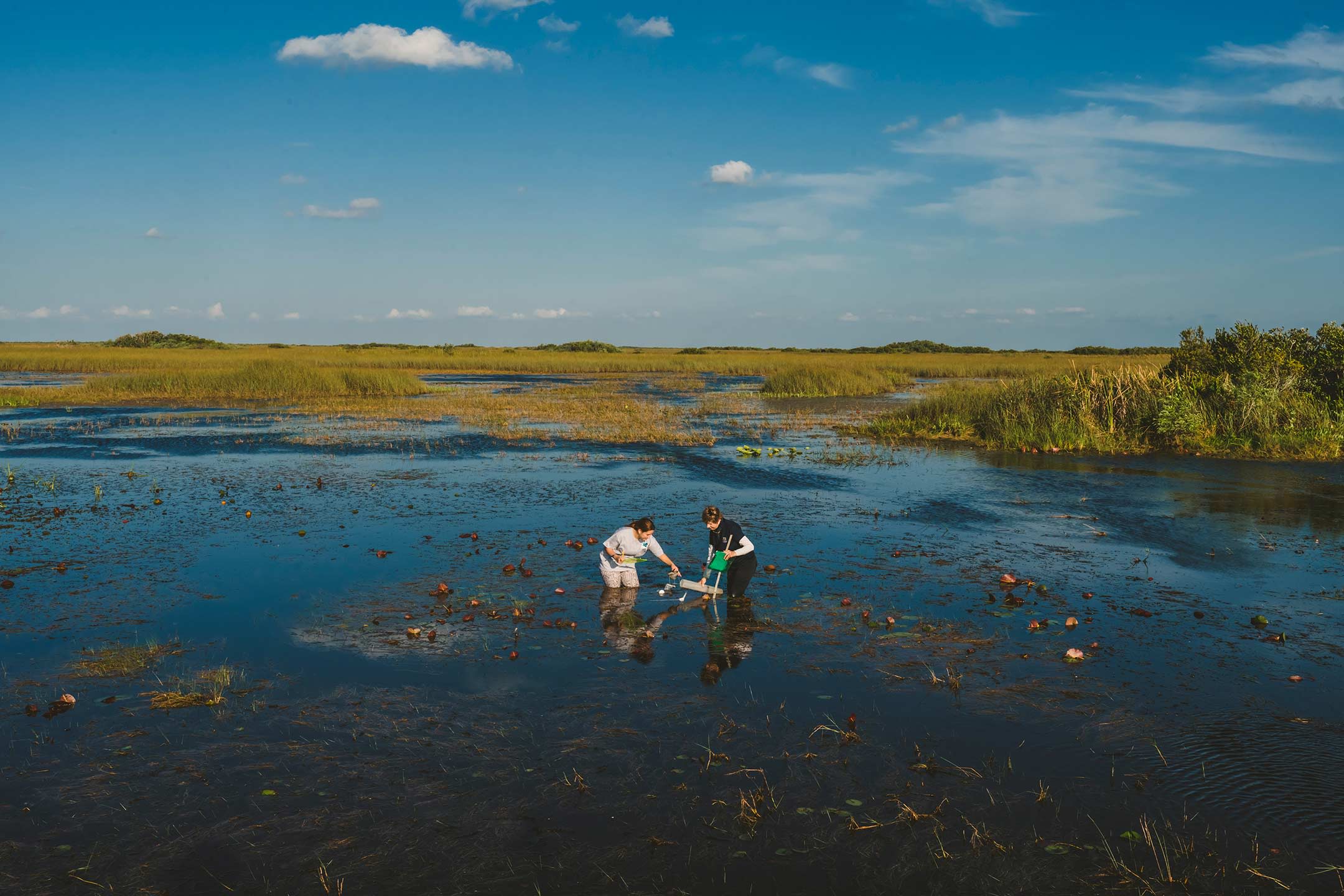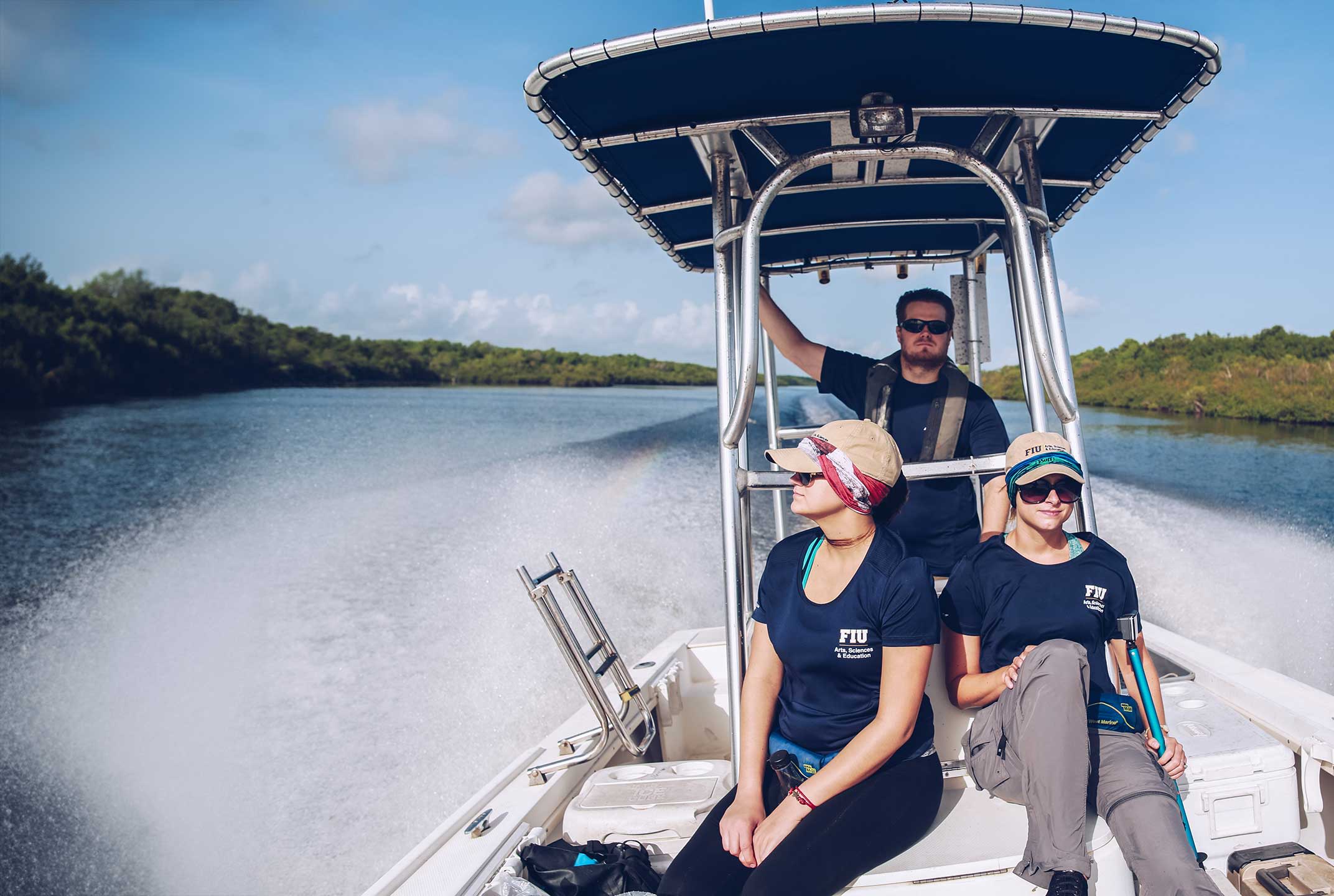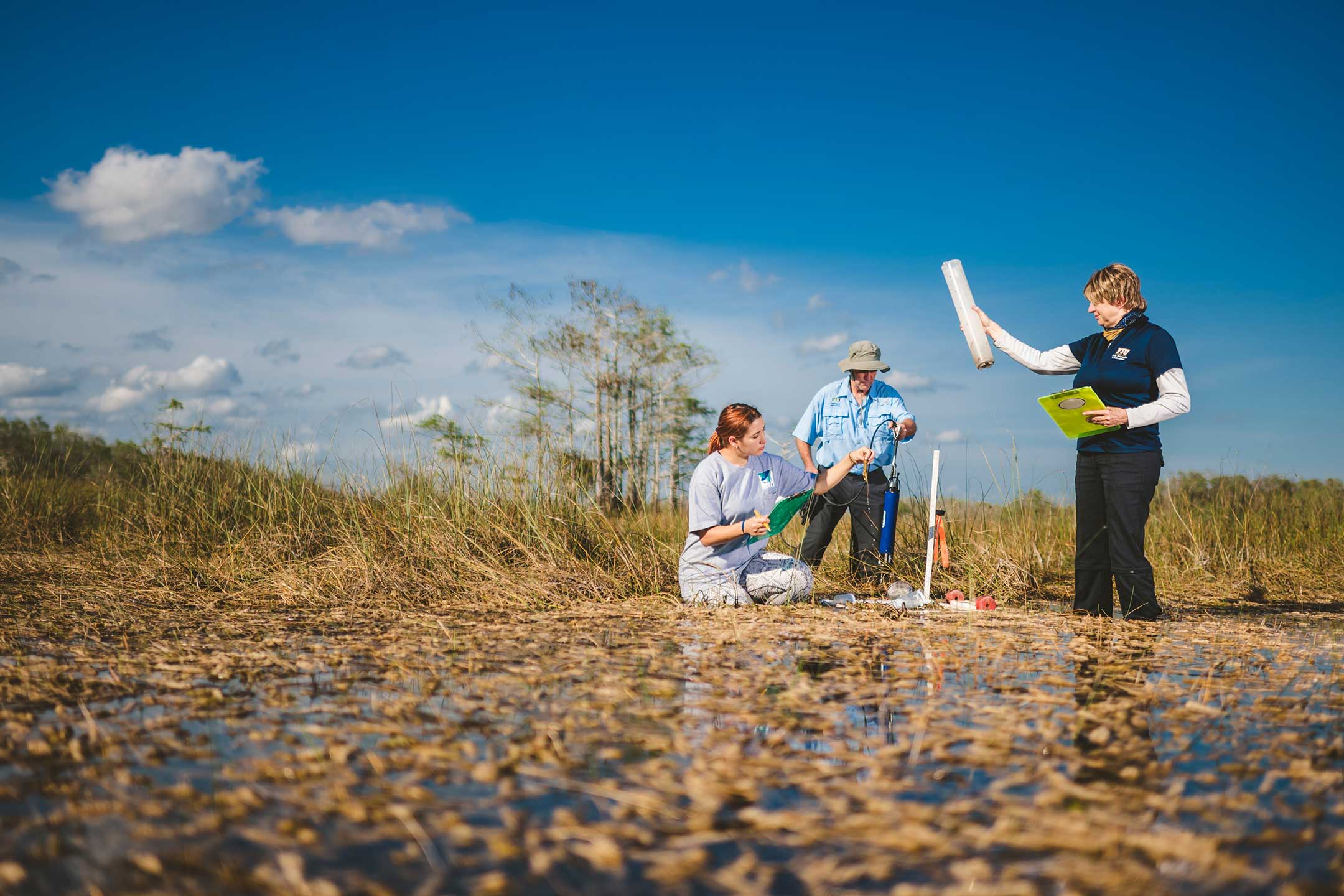From Research to Action:
FIU’s Bold Initiative in Building a Resilient and Sustainable World

From Research to Action: FIU’s Bold Initiative in Building a Resilient and Sustainable World

As the intensity and frequency of extreme climate events increase, seas are on the rise, species are facing extinction, ecosystems are spiraling and resources are being depleted, a powerful force in sustainability and resilience is rising — universities. At Florida International University, it’s more than a research agenda. The university is taking the uncertainty out of long-term sustainability. Located in Miami — the epicenter of sea level rise and extreme climate events — FIU has launched a university-wide initiative dedicated to the environment and environmental resilience.
“Universities have a responsibility to be part of the solution for the natural world’s challenges and the intimately intertwined challenges humanity is facing,” said Mike Heithaus, FIU Vice Provost of Environmental Resilience. “At FIU, we want to build not just a sustainable future, but one that is also inspiring and with opportunity for everyone.”
FIU is ranked 13th in the world for positive impact in the 2024 Times Higher Education Impact Rankings. Set forth in the university’s strategic plan is a dedicated focus on developing realistic and scalable solutions to the environmental crises faced today and developing the scientific foundation for preventing future ones. This includes helping students and the community realize the economic opportunities in developing solutions. FIU has been named Florida’s University of Distinction for Environmental Resilience, investing in research and the development of new technologies, harnessing tools like the Wall of Wind, expanding long-term monitoring programs, savings species from extinction, and developing new methods of environmental assessment and advanced storm surge models. FIU is expanding its research into preparing for and responding to disasters, public health challenges, sustainable building and clean energy solutions.
As the intensity and frequency of extreme climate events increase, seas are on the rise, species are facing extinction, ecosystems are spiraling and resources are being depleted, a powerful force in sustainability and resilience is rising — universities. At Florida International University, it’s more than a research agenda. The university is taking the uncertainty out of long-term sustainability. Located in Miami — the epicenter of sea level rise and extreme climate events — FIU has launched a university-wide initiative dedicated to the environment and environmental resilience.
“Universities have a responsibility to be part of the solution for the natural world’s challenges and the intimately intertwined challenges humanity is facing,” said Mike Heithaus, FIU Vice Provost of Environmental Resilience. “At FIU, we want to build not just a sustainable future, but one that is also inspiring and with opportunity for everyone.”
FIU is ranked 13th in the world for positive impact in the 2024 Times Higher Education Impact Rankings. Set forth in the university’s strategic plan is a dedicated focus on developing realistic and scalable solutions to the environmental crises faced today and developing the scientific foundation for preventing future ones. This includes helping students and the community realize the economic opportunities in developing solutions. FIU has been named Florida’s University of Distinction for Environmental Resilience, investing in research and the development of new technologies, harnessing tools like the Wall of Wind, expanding long-term monitoring programs, savings species from extinction, and developing new methods of environmental assessment and advanced storm surge models. FIU is expanding its research into preparing for and responding to disasters, public health challenges, sustainable building and clean energy solutions.
A perfect example of this is the Florida Everglades. The Everglades provides drinking water for more than 8 million people, helps protect communities from the impacts of hurricanes, reduces flooding risks, is home to endangered species, supports Florida’s fishing industry and is an important economic engine in the state’s tourism industry. By 1990, however, more than 40,000 acres of the Everglades were negatively impacted by excess phosphorous entering the system from farming operations. Working with the Miccosukee Tribe of Indians, FIU researchers embarked on a mission to identify the critical threshold of phosphorous. That research led to a water quality standard that was incorporated into the federal Comprehensive Everglades Restoration Plan and is still in place today.
Restoration of the Florida Everglades is one of the largest water restoration projects on the planet. FIU researchers believe the Everglades is a perfect example of collaboration and solutions-centered work. The NSF-supported Florida Coastal Everglades Long Term Ecological Research Program, led by FIU, features 180 scientists, students and staff from 19 universities, multiple government agencies and several organizations working together to create a sustainable future for this iconic ecosystem. FIU’s work on water doesn’t end within Florida’s boundaries. Faculty, staff and students are working across the globe to bring clean water to ecosystems and people. The university even houses the UNESCO Chair on Sustainable Water Security, addressing regional, national and global water security issues through interdisciplinary research and partnerships for sustainability.
Partnerships and collaborations are at the core of FIU’s success in environmental resilience. With more than $400 million in related research awards in the past 10 years, FIU has more than 200 faculty engaged in resilience research and training. The university also maintains more than 200 local, state and international partnerships and collaborations focused on the environment.
Within the university, FIU relies on a mix of disciplines in close proximity to present diverse viewpoints and create meaningful solutions. University ecologists and biologists are working alongside sociologists and political scientists with a shared understanding that nature and people must coexist. Public health researchers are collaborating with environmental scientists to identify threats and solutions. Disaster experts and faculty in business and law are working closely together to identify loss and risk assessments. Psychologists are helping families navigate the loss and trauma of extreme weather events. FIU engineers are developing high-wind-resistant roofing, climate-resilient concrete and high-tech tools for environmental monitoring. Computer scientists are working across disciplines to harness big data and AI to optimize monitoring programs and identify solutions. The research is conducted all across the world and within the living laboratories of South Florida.
“The challenges facing our environment and environmental resilience are significant, and they require significant efforts to tackle them head-on,” Heithaus said. “Universities are uniquely poised to provide real solutions and, at the same time, lead in the implementation of sustainable practices on our own campuses that can serve as models for industry, governments and even individual households.”


With one campus located on the edge of the Everglades and another on the shoreline of Biscayne Bay, living sustainably as a university community is a priority at FIU. But more than instituting green practices, sourcing sustainable building materials and reducing resource consumption, FIU is turning its campuses into testbeds for sustainability. The university maintains a nature preserve with three distinct ecosystems, boasts the largest palmetum on any university campus and is an Audubon-designated wildlife sanctuary. FIU continues to transform its sustainability practices, improving to a Gold STARS rating from the Association for the Advancement of Sustainability in Higher Education in 2024.
The leadership team spearheading environmental resilience at FIU says there are opportunities for all universities of all sizes to help chart a course for a shared and sustainable future.
- Invest in sustainability and environmental resilience research.
- Mix academic disciplines, encouraging different viewpoints to work through challenging issues.
- Develop partnerships and collaborations with other universities, government agencies, NGOs, companies and other stakeholders.
- Reach out to the local education system, working with schools, individual teachers and the students who will be the future leaders. After all, some challenges could take generations to solve. Engage youth from the beginning.
- Remember that resilience is more than carbon neutrality — It includes biodiversity, disaster risk-reduction, physical and mental health of populations, economic opportunity and more.
- Practice what you research. What good is research on reducing plastics in our oceans if no effort is made to reduce plastic-use on campus?
- Don’t limit efforts to campus. When something works, share the knowledge. If research identifies a solution to a problem, help implement through partnerships. Be a convener.
A critical piece to tackling environmental challenges is embracing the scope of issues involved and breaking down the barriers in people’s perception that the natural world and human world somehow stand apart rather than being intimately intertwined.
“Economic issues? At their core, it’s about the environment. Health issues? Environment is often central. These problems do not exist in a vacuum,” Heithaus said. “We also need to resist the idea that there is a trade-off between the environment and thriving economies. A thriving environment is good for the economy and there is economic opportunity in helping to create a thriving environment.”
At FIU, the goal is simple — be the source for information, education, innovation, demonstration, real-world engagement, testing and solutions for a sustainable and inspiring future.
This content is sponsored and provided by Florida International University.
The editorial staff of Inside Higher Ed had no role in its production.





